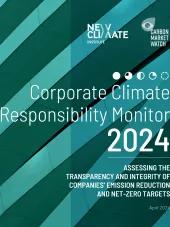From key emission reduction measure to greenwashing strategy
The food and agriculture sector is responsible for approximately a third of global greenhouse gas emissions. Among key emissions reduction strategies for the food and agriculture sector, regenerative agriculture has gained increasing interest among agri-food industry leaders, civil society organisations, farming communities and research organisations. While there is no universally agreed-upon definition, regenerative agriculture is often framed as a series of principles and practices that seek to go beyond sustainable agriculture to restore soil health, biodiversity, climate, ecosystem function while also improving socioeconomic outcomes.
Despite these uncertainties, studies have identified that regenerative agriculture plays a prominent role in the transition plans of some of the largest food companies. There are early signs that it is being misused by large companies and that its meaning is being diluted, leaving out key principles and practices such as climate justice and reducing chemical inputs.
This report seeks to build on these warnings. It takes a deeper look at the framing and planned use of regenerative agriculture by the 30 largest multinational food and agriculture companies, especially with regards to its role in reaching corporate GHG emission reduction targets. This report investigates if a common definition of regenerative agriculture has solidified, if companies are setting quantitative targets, and if companies intend to use regenerative agriculture for emission reductions, removals, or both. After taking stock of the use of regenerative agriculture in corporate sustainability and climate strategies, it underscores what this could mean for climate mitigation in the food and agriculture sector more broadly.
This analysis finds that regenerative agriculture is no longer a niche term among multinational food and agriculture companies:
- 24 out of the 30 companies analysed refer to regenerative agriculture in their sustainability communication
- 18 define regenerative agriculture
- 8 companies, which we call ‘extensive users’, already have quantitative regenerative agriculture targets in place.
- 8 companies, which we call ‘early experimenters,’ are currently piloting regenerative agriculture projects.
We find that there is a lack of a common definition or regenerative agriculture, even among those who use regenerative agriculture most in their sustainability strategies and communication.
Although it is crucial and commendable that companies are pursuing practices that help sustain and enhance soil health, biodiversity and water usage, it is unclear if and how regenerative agriculture will lead to significant emission reductions and permanent removals. This is because companies often conflate reductions and removals, presenting soil carbon sequestration as a key component of regenerative agriculture, although the potential of it in agricultural soils is heavily debated, and permanence of such removals is limited. Furthermore, in the absence of a reliable measurement and verification system, it is nearly impossible to assess the changes in soil carbon content and make robust claims.
Companies’ regenerative agriculture strategies allow for significant flexibility and do not always mention practices key to regenerative agriculture’s comprehensive definitions such as reducing fertiliser use or chemical inputs. Moreover, we find that meat and dairy companies use regenerative grazing, a subcategory of regenerative agriculture, to continue unsustainably high production numbers. The claim that carbon sequestration in pasture soils neutralises methane emissions from livestock is misleading given that regenerative grazing practices will only lead to a small amount of carbon being sequestered in soils, and so are not a silver bullet for the meat and dairy industry.
These findings suggest that regenerative agriculture, as it is currently defined and practiced by multinational food and agriculture companies, lacks the ambition necessary to significantly reduce emissions or increase removals. Food and agriculture companies are not using regenerative agriculture to redesign the food production system – instead, they are superposing some regenerative agriculture practices on top of business-as-usual agricultural practices.
A common, ambitious and science-based regenerative agriculture framework is required to assess company definitions and approaches to regenerative agriculture and propose a path forward for regenerative agriculture. In the absence of such a framework, companies claiming to reduce emissions through regenerative agriculture should clearly articulate how these reductions will be achieved and ensure that their claims are backed by stringent verification schemes.





